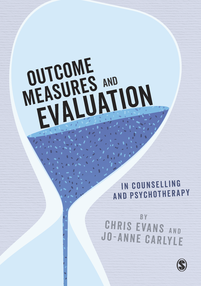Please: “CORE-OM” not “CORE-34”!
Keeping to the original naming, which has the CORE-OM as the primary measure, and the CORE-10 showing that the latter is a shortened form with 10 items, keeps things clear on the web and in the literature.
Background
The CORE-OM (Clinical Outcomes in Routine Evaluation – Outcome Measure) was the central measure in the CORE system, linking with the CORE-A, the practitioner completed context setting tools to provide what we hoped would be a sound core for evaluation of change in psychological therapies.
The CORE-OM has 34 items, all with the same five level response choice, the time frame is the last seven days. It was designed, and this was led partly by the commissioning specification, to cover four main domains: wellbeing, problems, functioning and risk and has 4, 12, 12 and 6 items focused on those domains respectively. Of the risk items, four address risk to self and two address risk to others. Eighteen items were “tuned high” and 16 tuned to a lower range of disturbance/distress. Eight items are positively cued and are reverse scored. The scores on the domains can be reported separately but were never expected to form neatly separate factors and psychometric explorations have never found a neat fit to such models for any populations. In every sample explored so far, the risk items are, predictably, relatively distinct from the other items forming a very clearly separable response space from that covered by the other items. The “non-risk” score of the 28 items other than the risk items forms a good aggregate score if the risk issues are to be separated but most studies report the total score.
Scoring
The original scoring was the mean across the items, i.e. between 0 and 4 as the scoring of the item responses is from 0 to 4. After that, as some users didn’t like using two decimal places, scores have often been reported as a “clinical score” by multiplying that by ten, giving scores between 0 and 40. Caution should be used to make sure whether results are reported with that x10 multiplier; however, the difference is so large that it is rarely likely that it could be unclear which scoring has been used. Occasionally, and not in line with any recommendations from the CORE teams over the years, people report total scores with a theoretical range, for all 34 items, from zero to 136, again, there should be no difficulty identifying when this scoring has been used.
I have added a page of images and explanations that take you through scoring the CORE-OM.
Missing items and pro-rating
Slightly harder to identify can be what the practitioners or researchers have done about missing items. We recommend prorating up to 10% missing items, so a total score can be reported as the mean across up to 31 items, the non-risk score on up to 25 [Note: this said “26” until 17/4/23 when it was brought to my/our attention that we haven’t been consistent about this over the years and allowing three missing items here, i.e. rounding up the 10% of the 28 items was clearly what we have said at times in the past and probably more sensible. The difference in typical NR score datasets is likely to be tiny.] and the problems and functioning scores as the means across 11 of the items on those domains. Prorating is not recommended for shorter scores (i.e. for the wellbeing and risk scores). It is very rare that so many items are omitted that even a prorated total score cannot be reported.
References
The main references to the CORE-OM are as follows.
- Evans, C., Mellor-Clark, J., Margison, F., Barkham, M., Audin, K., Connell, J., & McGrath, G. (2000). CORE: Clinical Outcomes in Routine Evaluation. Journal of Mental Health, 9(3), 247–255. http://doi.org/10.1080/jmh.9.3.247.255. Gave the rationale and development of the CORE-OM.
- Evans, C., Connell, J., Barkham, M., Margison, F., McGrath, G., Mellor-Clark, J., & Audin, K. (2002). Towards a standardised brief outcome measure: Psychometric properties and utility of the CORE-OM. British Journal of Psychiatry, 180(JAN.), 51–60. http://doi.org/10.1192/bjp.180.1.51. First and still the most extensive psychometric exploration of the CORE-OM in English in UK clinical and non-clinical samples of convenience.
- Connell, J., Barkham, M., Stiles, W. B., Twigg, E., Singleton, N., Evans, O., & Miles, J. N. V. (2007). Distribution of CORE-OM scores in a general population, clinical cut-off points and comparison with the CIS-R. British Journal of Psychiatry, 190, 69–74. http://doi.org/10.1192/bjp.bp.105.017657. Gives the first fairly representative UK non-clinical population sample data albeit censored by CIS-R interviews. Uses the “Clinical Score” which is 10x the mean item score in the previous reference.
Download
Depending on your web browser, clicking on that will either open it, in which case you should be able to save it from there, or will offer to download it for you (or it may just download it to its default download location). Downloading means you accept the licence on the measure, see copyright and licensing information.
Page created for 2015 site, last updated, adding link to new scoring page 13/4/24, tweak 16/4/24. Page text and header image (Mont Blanc from Aime in France) from CE, licence: Attribution 4.0 International (CC BY 4.0) .
Content checker target (not for humans!): pW6QTTHWk@UHY


